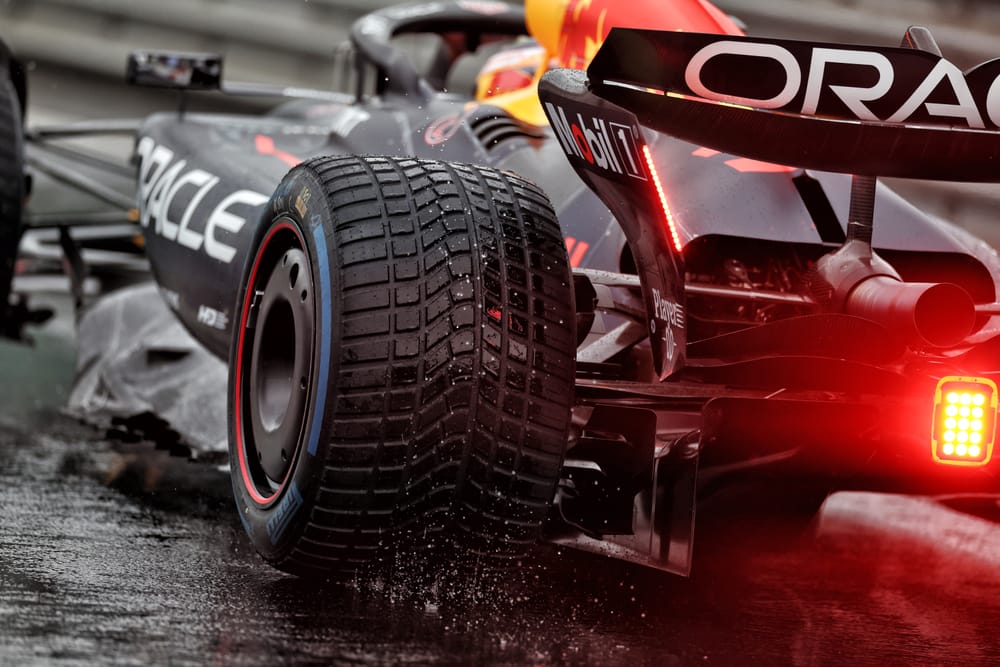Formula 1’s fundamental problem of poor visibility in wet weather racing cannot be solved with the current ground effect cars.
That is the reality that F1 has to accept after a Belgian Grand Prix weekend where the debate about racing in the rain returned and solutions to help the situation have been called for again.
The delays in getting Sunday's Spa-Francorchamps race underway triggered complaints from fans, and some drivers, that the FIA waited too long for the track to dry before it got things rolling.
Max Verstappen was one of the most vocal, as he suggested it was nonsensical to wait so long for the weather to improve, even though the FIA had made clear it was going to be more conservative after the crashes that happened in the wet at the British Grand Prix.
“It's a bit of a shame,” Verstappen said. “I knew that they would be a bit more cautious after Silverstone, but this also didn't make sense.
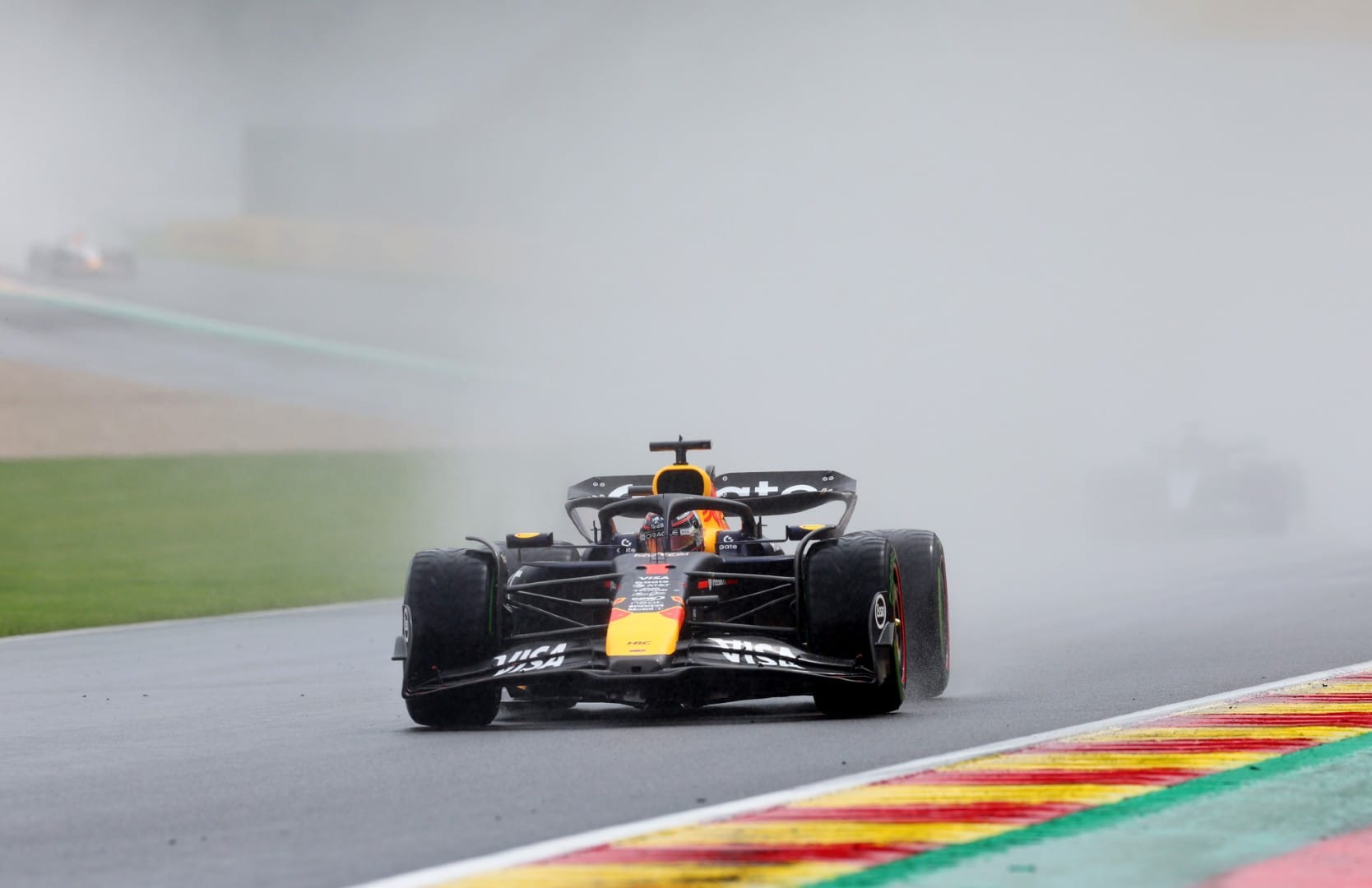
“Then it's better to say: ‘You know what? Let's wait until it's completely dry and then we just start on slicks’. Because this is not really wet weather racing for me.”
Not everyone agreed though and, with the dangers of Spa’s Raidillon corner well known by everybody, George Russell suggested it would have been unnecessarily risky to push ahead too soon.
“As a racer you always want to get going, you love driving in the rain, but the fact is when you're doing over 200 miles an hour out of Eau Rouge and you literally cannot see anything - you may as well have a blindfold on,” he said.
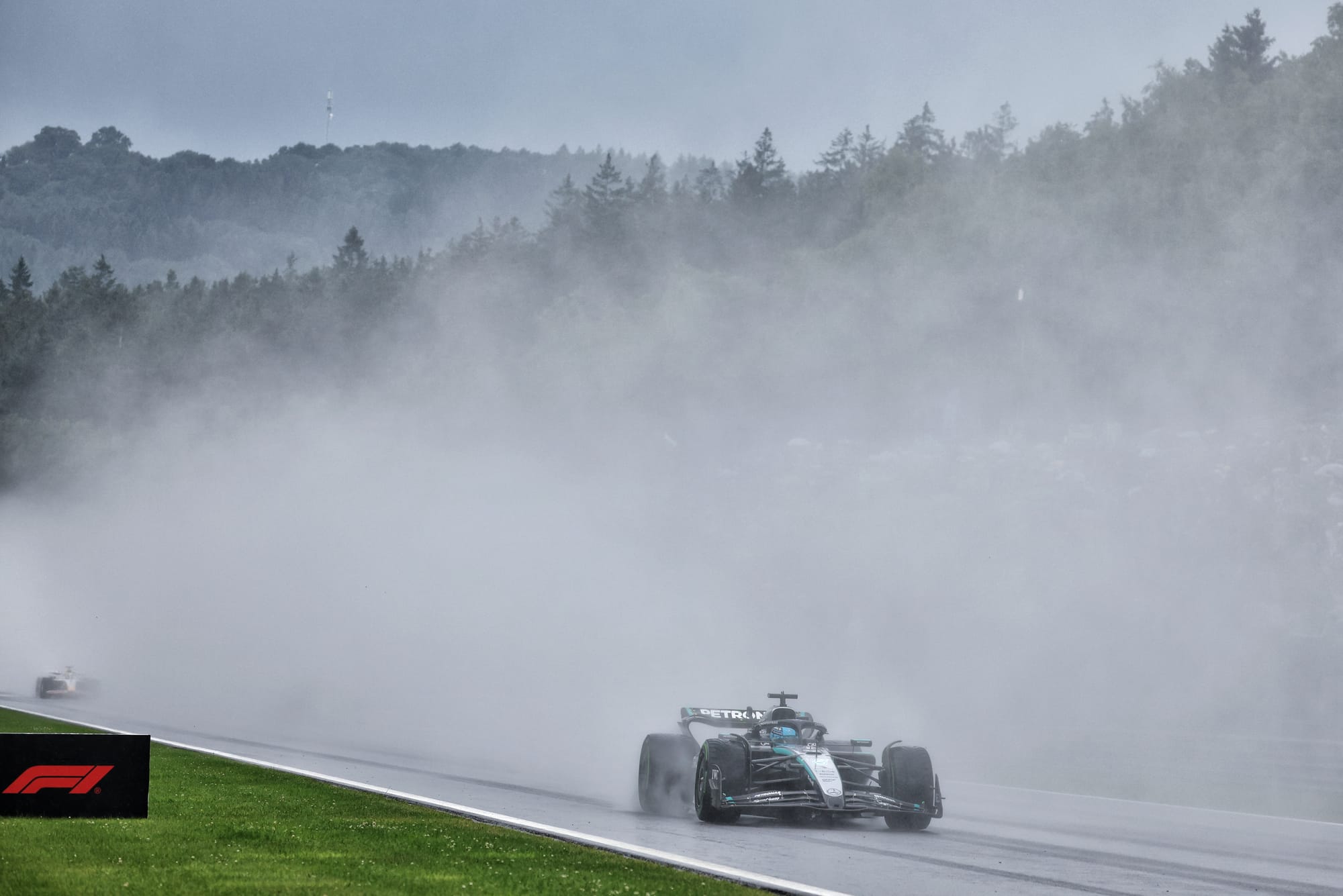
“It isn't racing, it's just stupidity. So I think considering it was clearly going to be dry from 4 o'clock onwards I think they made the right call.”
While many in the paddock were surprised by how cautious the FIA was in getting things going, there was an equal acceptance that it was better to have played it too safe than to have gone too early and been criticised because there had been a big accident.
As Ferrari team principal Fred Vasseur said: “Imagine if you have a crash in Raidillon, then everybody is blaming the race control. I think it's a huge responsibility for them also.”
A ground effect car problem

F1’s problems of racing in wet weather are not new, and nor is the understanding of the real issue at stake, drivers not being able to see, rather than them suffering from a lack of grip.
So this is not about trying to improve wet weather rubber - as the role of the tyres is not the issue here.
Instead, it is to do with the spray that is thrown up by the car itself - and this is something that has gotten worse over the years because downforce (and therefore the amount of air being moved about) has increased so much.
One of the ironies of the current rules set, to minimise dirty air and stop airflow being washed out wide or high in the air, is that in the wet it means the spray is no longer thrown well away from pursuing cars.
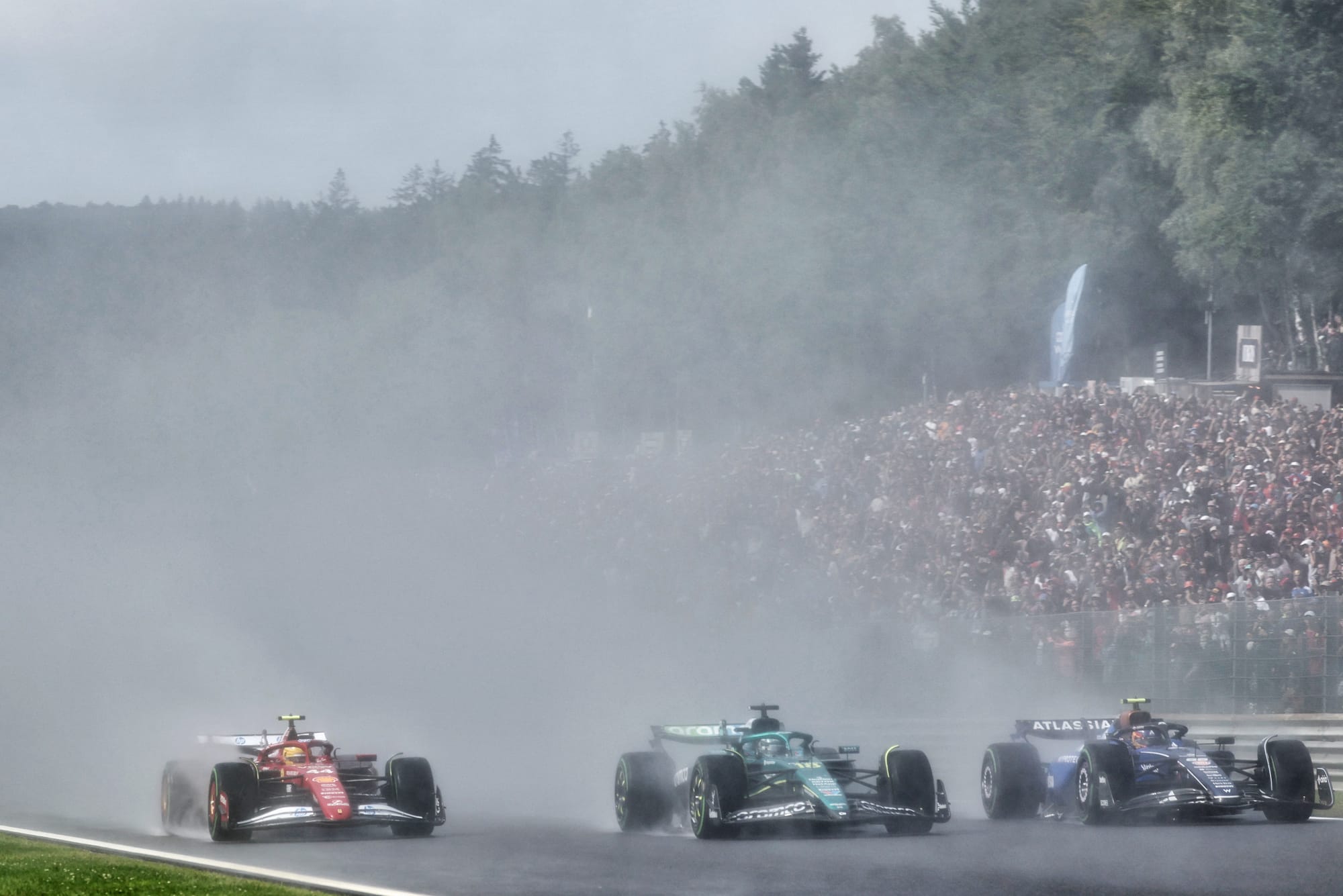
Addressing this spray issue does not have an obvious solution either, because all attempts to solve it so far have failed.
Back in 2023 and 2024, McLaren, Mercedes and Ferrari all assisted the FIA in trying out various iterations of wheel rain guards to see if these would help limit the spray being thrown up.
A test of some minimalist solutions at Silverstone proved a failure, so the FIA then went full on with a more extreme idea that Ferrari tried out at Fiorano.
This solution, while unsightly, was aimed at seeing the impact of there being no spray thrown up from the wheels at all.

The conclusion was that it made no difference to how much a following driver could see – because most of the spray is actually thrown up from the floor and pumped out by the diffuser.
As Vasseur said: “In the end, the spray is coming from the floor. It means that there is nothing that we can do, or you have to stop massively the performance of the car if you want to put something there.”
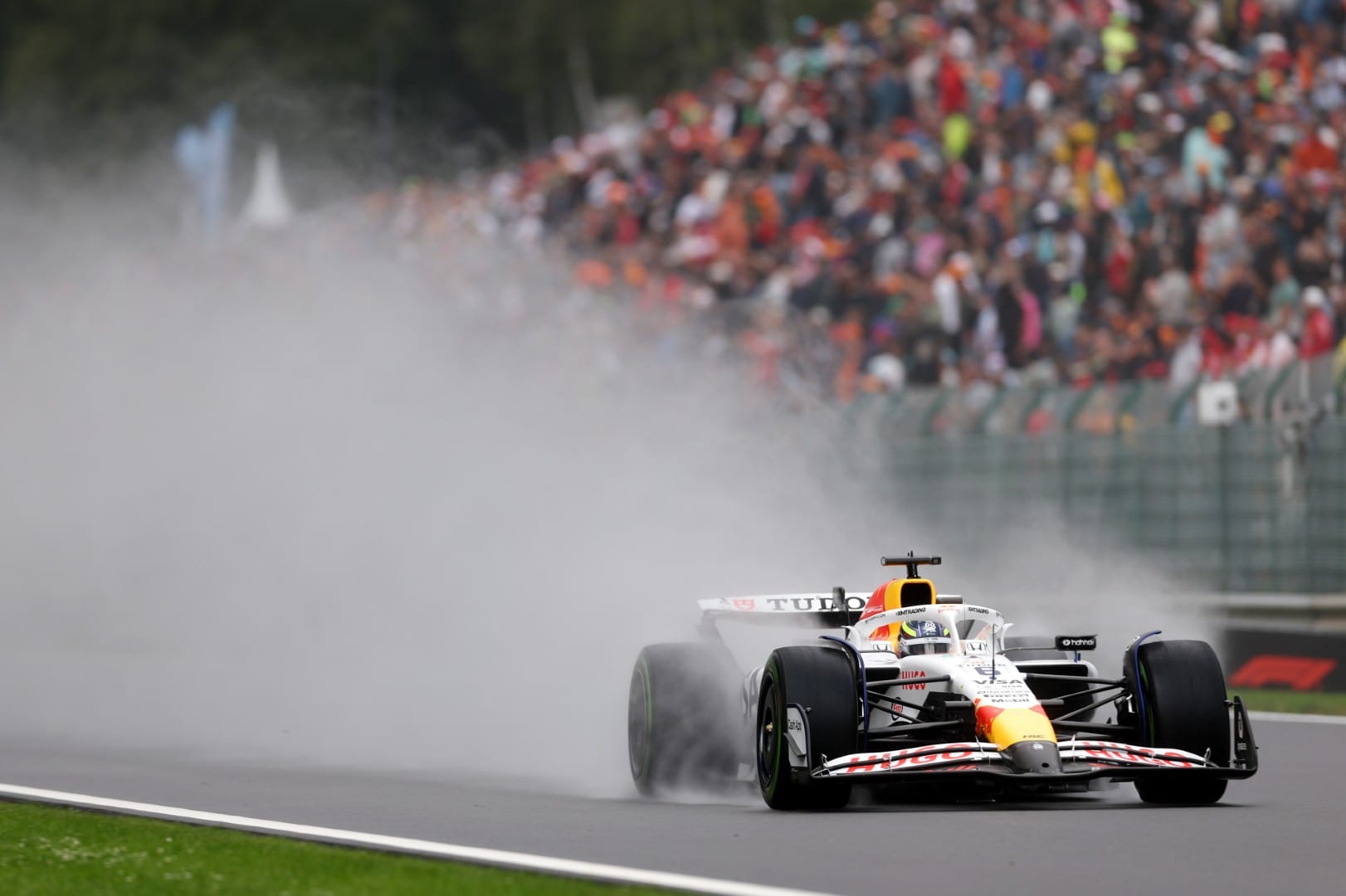
Speaking last year, the FIA’s single seater director Nikolas Tombazis said that the idea of fitting spray guards to tyres had been abandoned as the tests had concluded they did not improve the situation enough.
And with the airflow under the car that throws water up into the air being so fundamental to the current rules set, there is no way to stop the spray without it actually dramatically impacting downforce.
Asked about a potential solution being to fit a cover or curtain over the diffuser to keep the water down, Tombazis said it was impossible as it would impact the airflow – and therefore downforce – of the car too much.

“Theoretically you could do something there, but that would be like removing all the downforce and so on,” he said.
“So it would be quite an issue. It's not an easy next step, to be honest.”
A matter of caution
F1’s new 2026 regulations should mean cars have much less powerful Venturi tunnels next year, which could pull back the amount of spray being thrown up.
But they will still produce a lot of downforce, which means in the wet they will throw out a lot of water.
So without any way to prevent that from happening, the only way to keep racing safely is to wait until conditions improve – even if not everybody likes that approach.
And those criticising the FIA for being too cautious right now because no incidents happened at Spa would be the first to speak out if something bad happened because conditions were too bad.
“This [the lack of visibility] I think is the most dangerous because if there is a crash in front of you, you can't see the car who has stopped on track,” said Vasseur.
“I had the question a couple of times after the race, 'do you think that we could have started the race a bit earlier, or whatever?' For sure, in terms of grip, for sure. But in terms of visibility, I'm not sure.
“And we can't blame them, because we would be, collectively, the first one to give them s**t if something happened. So in this sense, we have to respect their decision.
“I'm not sure that on this car we can do something different for the spray.”



